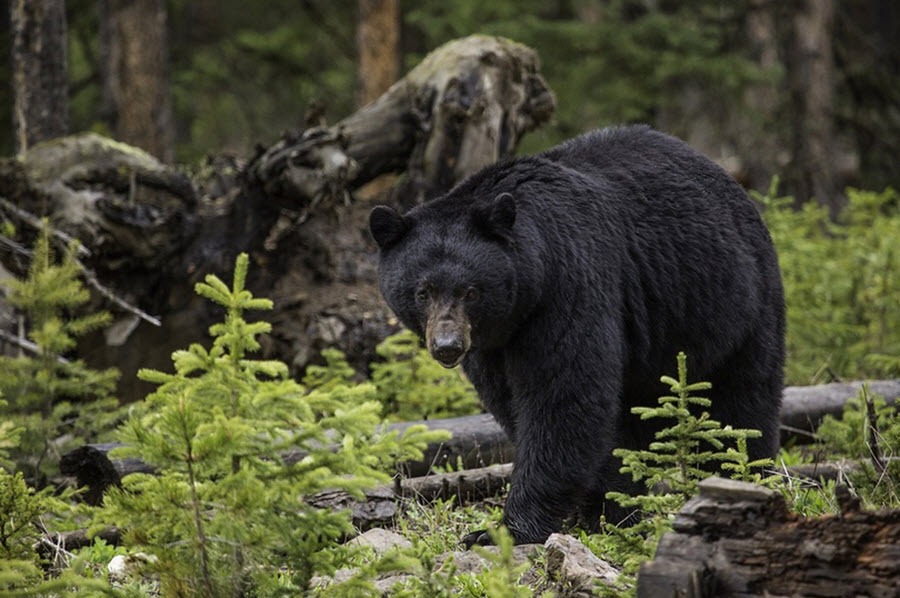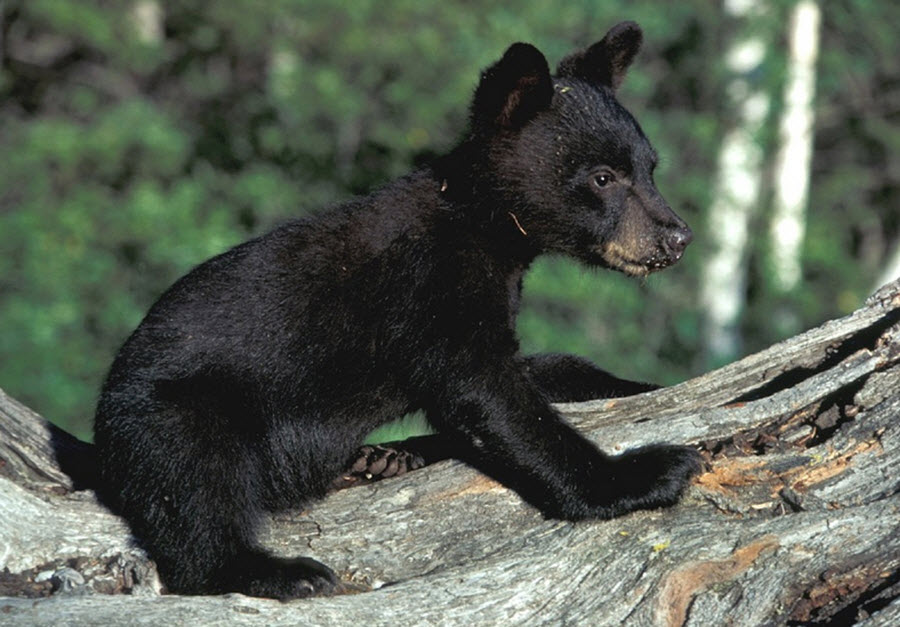The American black bear is a medium-sized bear native to North America. It´s scientific name used to be Euarctos americanus, but it´s current scientific name is Ursus americanus.

The American black bear is smaller than the other bears present in North America. It is an adaptable species that can be found in many different parts of North America and in varying habitat types, where its omnivore and opportunistic eating habits help it make the most of available resources. The standard habitat for the American black bear is forest, but it will leave the forest if necessary to find food.
Unlike many other bear species, the American black bear is not considered endangered.
Scientific classification
| Kingdom: | Animalia |
| Phylum: | Chordata |
| Class: | Mammalia |
| Order: | Carnivora |
| Family: | Ursidae |
| Genus: | Ursus |
| Species: | Ursus americanus |

Subspecies
There are 16 subspecies of American black bear.
| Scientific name | Common English name | Information |
| Ursus americanus altifrontalis | Olympic black bear | Lives along Noth America´s Pacific Northwest coast, from central British Columbia in Canada through northern California in the United States. The populations found the furthest inland live in British Columiba and in northern Idaho, U.S. |
| Ursus americanus amblyceps | New Mexico black bear | Lives in: – Colorado – New Mexico – Texas (western part) – Arizona (eastern part) – Utah (south-eastern part) – Mexico (northern part) |
| Ursus americanus americanus | Eastern black bear | Lives from southern Alaska, through Canada and down to Maine and southern Texas in the US.
It is comparatively common in Eastern Canada och the eastern United States, and can adapt to several habitat types.
Most specimens are black.
|
| Ursus americanus californiensis | California black bear | Lives in the mountains of southern California, north through the Central Valley to southern Orgeon.
Can adapt to various climates and habitats, including temperate forest and chaparral shurbland.
Most specimens are black, few are cinnamon. |
| Ursus americanus carlottae | Haida Gwaii black bear Also known as Queen Charlotte Islands black bear | Lives in Alaska and in the Haida Gwaii archipelago off the northern Pacific coast of Canada.
Tends to grow bigger than its mainland counterparts. |
| Ursus americanus cinnamomum | Cinnamon bear | Lives in the United States; in the states Colorado, Idaho, Montana (western part), Wyoming, Washington (eastern part), Oregon, and Utah (northeastern part).
It is called Cinnamon bear because the fur is typically brown or reddish-brown. |
| Ursus americanus emmonsii | Glacier bear | Lives in south-eastern Alaska.
The fur is silvery-gray, with a blue luster on the flanks. |
| Ursus americanus eremicus | East Mexican black bear | Lives in north-eastern Mexico and Texas, United States.
Strongly associated wit hthe Big Bend National Park and US/Mexican desert border areas. |
| Ursus americanus floridanus | Florida black bear | Lives in the United States; in the states Florida, Georgia (southern part), Alabama, and Mississippi (not in the southernmost part).
Most of the bear i black, but the nose is brown and many individuals have a white blaze on the chest. |
| Ursus americanus hamiltoni | Newfoundland black bear | Lives in Newfoundland, Canada.
Tends to grow larger than its mainland counterparts. |
| Ursus americanus kermodei | Kermode bear | Lives along the central coast of British Columbia, Canada.
Approximately 90% of the population looks like normal black bears, but the remaining 10% or so sports white or cream-colored coats caused by a recessive gene. These unusual individuals are known as Spirit bears.
|
| Ursus americanus luteolus | Louisiana black bear | Lives in Lousiana, eastern Texas, and southern Mississippi |
| Ursus americanus machetes | West Mexican black bear | Lives in north-central Mexico |
| Ursus americanus perniger | Kenai black bear | Lives at the Kenai Peninsula in Alaska |
| Ursus americanus pugnax | Dall Island black bear | Lives at Dall Island in Alaska´s Alexander Archipelago |
| Ursus americanus vancouveri | Vancouver Island black bear | Lives on Vancouver Island in British Columbia, Canada |
